I'm trying to better understand the calibrateCamera and SolvePnP functions in OpenCV, specifically the rotation vectors returned by these functions which I believe is an axis-angle rotation vector (NOT as I had thought initially the yaw,pitch,roll angles). I would like to know the rotation around the x,y and z axis of my checkerboard image. The OpenCV functions return a rotation vector in the form rot = [a,b,c]
Using this answer as a guide I calculate the angle theta with theta = sqrt(a^2,b^2,c^2) and the rotation axis v = [a/theta, b/theta, c/theta];
Then I take these values and use the Axis-Angle To Euler conversion on euclideanspace.com. shown here:
heading = atan2(y * sin(angle)- x * z * (1 - cos(angle)) , 1 - (y^2 + z^2 ) * (1 - cos(angle)))
attitude = asin(x * y * (1 - cos(angle)) + z * sin(angle))
bank = atan2(x * sin(angle)-y * z * (1 - cos(angle)) , 1 - (x^2 + z^2) * (1 - cos(angle)))
I'm using one of the example OpenCV checkerboard images (Left01.jpg), shown below (note the frame axes in the upper left corner with red = x, green = y, blue = z
Using this image I get a rotation vector from calibrateCamera of [0.166,0.294,0.014] Running these values through the calculations discussed and converting to degrees I get:
heading = 16.7 deg
attitude = 1.7 deg
bank = 9.3 deg
I believe these correspond to yaw,pitch,roll? The 16.7 degree heading seems high looking at the image, but it's hard to tell. Does this make sense? What would be the correct way to figure out the euler angles (angles around each axis) given the OpenCV rotation vector? Snippets of my code are shown below.
double RMSError = calibrateCamera(
objectPointsArray,
imagePointsArray,
img.size(),
intrinsics,
distortion,
rotation,
translation,
CALIB_ZERO_TANGENT_DIST |
CALIB_FIX_K3 | CALIB_FIX_K4 | CALIB_FIX_K5 |
CALIB_FIX_ASPECT_RATIO);
Mat rvec = rotation.at(0);
//try and get the rotation angles here
//https://stackoverflow.com/questions/12933284/rodrigues-into-eulerangles-and-vice-versa
float theta = sqrt(pow(rvec.at<double>(0),2) + pow(rvec.at<double>(1),2) + pow(rvec.at<double>(2),2));
Mat axis = (Mat_<double>(1, 3) << rvec.at<double>(0) / theta, rvec.at<double>(1) / theta, rvec.at<double>(2) / theta);
float x_ = axis.at<double>(0);
float y_ = axis.at<double>(1);
float z_ = axis.at<double>(2);
//this is yaw,pitch,roll respectively...maybe
float heading = atan2(y_ * sin(theta) - x_ * z_ * (1 - cos(theta)), 1 - (pow(y_,2) + pow(z_,2)) * (1 - static_cast<double>(cos(theta))));
float attitude = asin(x_ * y_ * (1 - cos(theta) + z_ * sin(theta)));
float bank = atan2(x_ * sin(theta) - y_ * z_ * (1 - cos(theta)), 1 - (pow(x_, 2) + pow(z_, 2)) * (1 - static_cast<double>(cos(theta))));
float headingDeg = heading * (180 / 3.14);
float attitudeDeg = attitude * (180 / 3.14);
float bankDeg = bank * (180 / 3.14);
